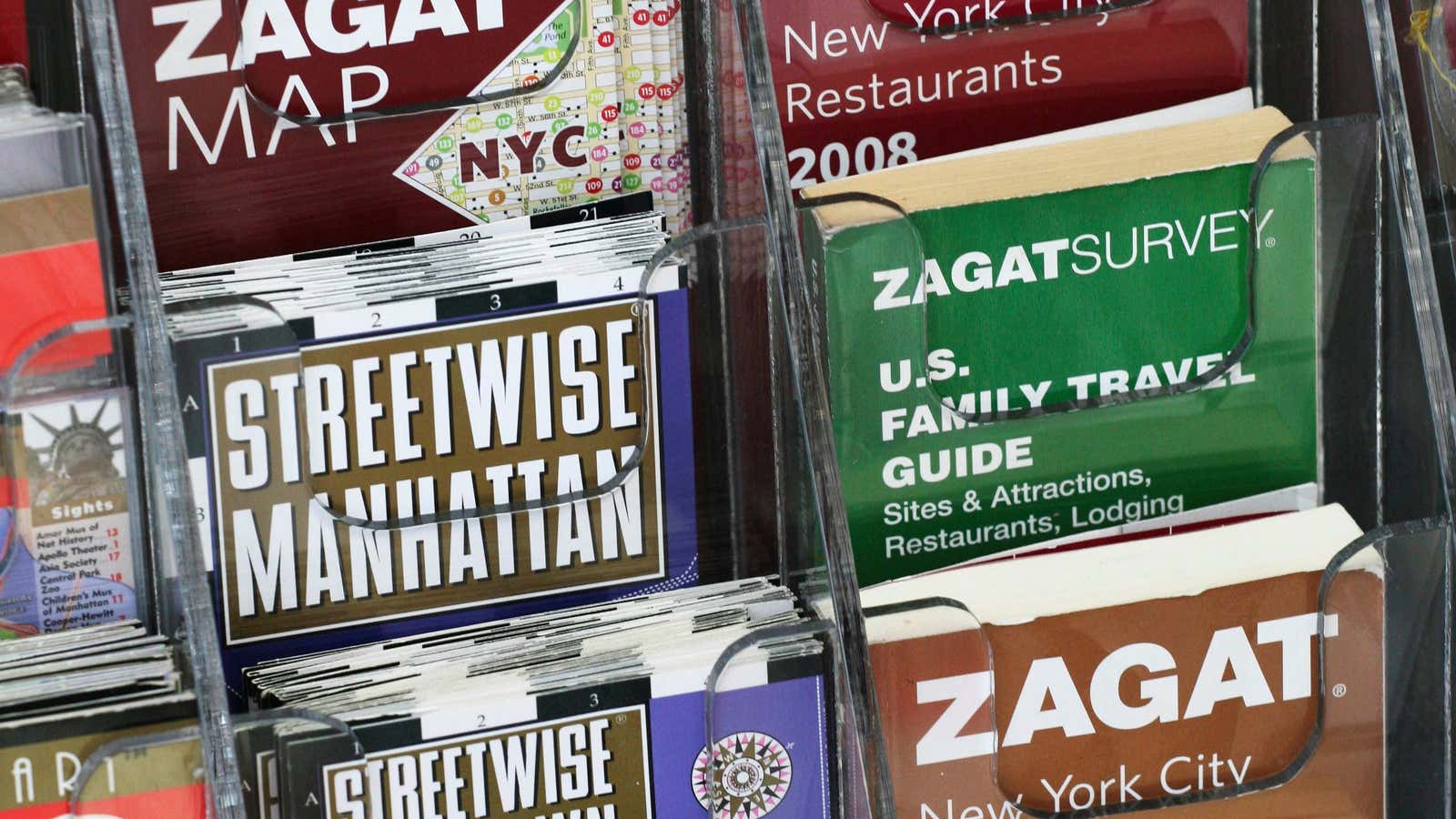Forty years ago, Tim and Nina Zagat, two New York City lawyers, published the first of what would become an annual slim, burgundy volume of restaurant recommendations. Zagat Guides quickly became indispensable for their pithy reviews, culled from surveys the Zagats passed out to their friends, and an ever-widening circle of opinionated diners.
“It was the first example of user-generated content in the space,” says Chris Stang, CEO of The Infatuation, a website that publishes professional restaurant reviews, and which bought Zagat from Google in 2018. The company recently announced it would publish a print edition of the New York City guide this fall, the first since 2016. Under Google’s ownership, Zagat became an online editorial product with articles about food trends and city tours, rather than a physical, pocket-sized collection of restaurant reviews.
When The Infatuation bought Zagat, says Stang, longtime fans were vocal about their desire to see the print guide revived. That won’t be Zagat’s main product though, he adds. In a return to its user-generated roots, Zagat guides will also become online, crowd-sourced restaurant reviews.
Stang has spent the past decade building a website based on professional, editorial reviews. But he believes people also want more casual recommendations from other regular diners, in the search for new dining experiences.
“We’re pretty resolute in the idea that restaurant discovery is rarely a zero-sum game,” Stang says. “People tend to read something then want to have some context and look for another, hopefully supportive opinion. So we think that in a lot of ways they can live side by side, in the sense that people tend to want a few different sources for their information.”
One of the major advantages of building a review site around user-generated content is the ability to populate it rapidly and cheaply, without hiring an army of reviewers and editors. The downsides can be seen clearly in sites like Yelp, Open Table, and Trip Advisor, where reviews can be fickle, and occasionally cruel.
Yelp, in particular, has embodied some of the worst of these qualities. Small businesses have complained that bad reviews are impossible to verify and have very real financial effects. There’s a persistent belief among users and business owners alike that purchasing advertising with Yelp will move good reviews to the top and bad reviews to the bottom. Some restaurant owners have been creative in getting out ahead of Yelp. In 2014, Botto Bistro, an Italian restaurant in San Francisco, flipped the perceived pay-to-play formula on its head by promising diners a discount for writing one-star reviews, the more over-the-top, the better.
In some cases, Yelp has even inspired online bullying. Julia Kramer, deputy editor at Bon Appétit, experienced this first hand. “About a decade ago when I was a restaurant critic for Time Out Chicago, I reviewed a restaurant I’d found on Yelp that had very high ratings,” she says. “The place was total garbage and I said so in the review. I also mentioned in the review how dubious the experience had made me of Yelp. In response, some Yelpers created a message board thread on the site about me, where they posted my personal phone number and threatened to harass me in person.”
Stang can’t say yet how exactly the new version of Zagat will avoid the biggest pitfalls of Yelp—like the kind of harassment Kramer endured, or the ugliness that follows when a restaurant gets a one-star review based on a toddler’s opinion. He believes its narrow scope—Zagat online will focus only on restaurants, not on dry cleaners and dentists as well—will draw a more focused, higher-quality user, who will be more interested in adding to a knowledge base than complaining about a bad experience.
He also notes that Zagat’s history might position it uniquely to form the base of a great online experience. After all, even though print feels retro in 2019, from a certain perspective, Zagat has always been ahead of the curve in terms of how people look for new places to eat, even from its inception. “They were really building an app back in the day, right?” Stang said. “They built a mobile guide that went in your pocket and helped you find restaurants.”
